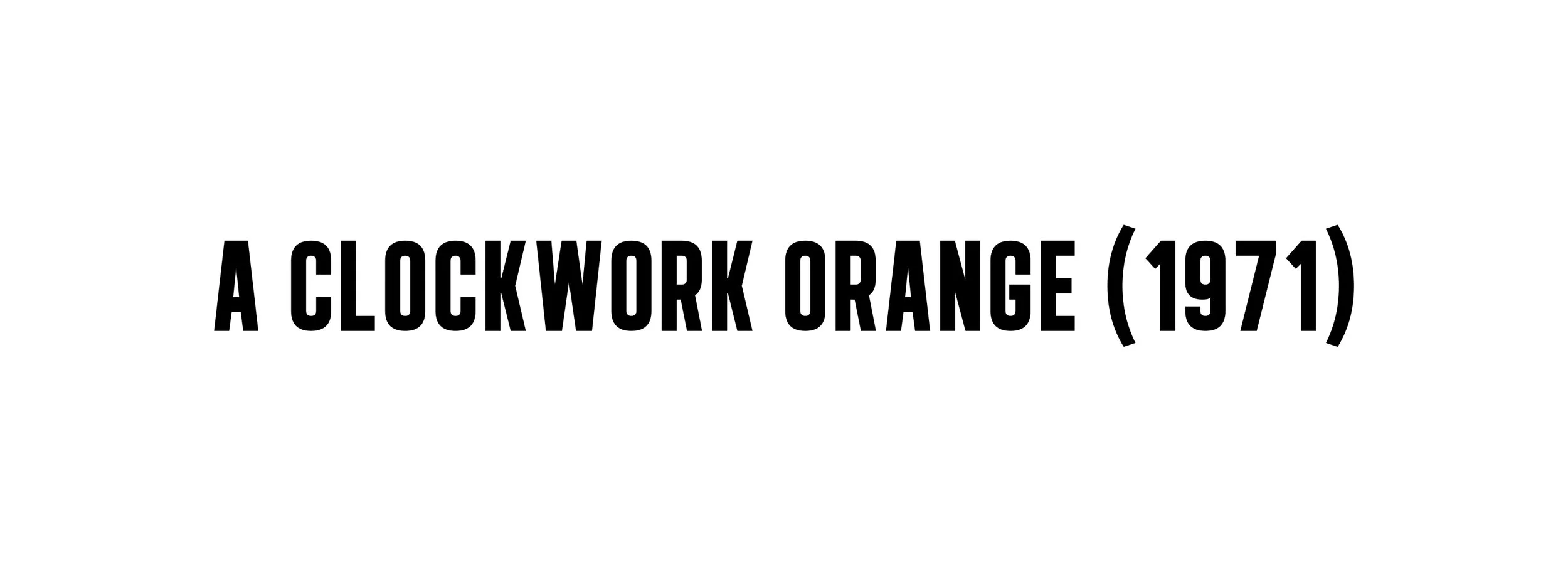A Clockwork Orange (1971) Director: Stanley Kubrick (Scene: 00:28:05 - 00:29:03)
Stanley Kubrick opens his exorbitantly flashy film, A Clockwork Orange (1971), with loud music and expressive color. The film switches back and forth from red and blue title cards until finally starting on the deadly cold eyes of Alex DeLarge (Malcolm McDowell). Wendy Carlos’ arrangement of Henry Purcell’s “Music for the Funeral of Queen Mary” opens the scene as we slowly push away from our protagonist. The camera continues moving down the corridor as we navigate the spaces of this narrow hall. The camera finally rests on an image of Alex sitting with his “droogs” in the Korova Milk Bar surrounded by statues of nude women. In throughout the film, we inhabit the spaces of small rooms where horrifying, shocking and otherwise disgusting acts unravel in front of us.
The world of A Clockwork Orange is portrayed as cold and heartless -- an overall inhospitable place. Alex frequents the dark, desolate streets of London with his frightening crew, causing mayhem. The architecture of A Clockwork Orange is notable for its depiction of a dystopian society. The film makes use of modern buildings, minimal in terms of their style, such as the Tavy Bridge Centre in Thamesmead (Alex’s apartment complex) and Brunel University’s Lecture Centre (Ludovico Medical Facility). Stanley Kubrick reportedly found the locations for the film by searching through architectural magazines.
The bare bones design of Thamesmead contributes to the notion that the architecture of A Clockwork Orange exists solely with the intentions of serving its community in a minimal way. In other words, it’s not about the complexity of the design, but rather, its functionality. The most notable space, however, is the Korova Milk Bar in the opening scene. This space was one of the few sets designed for the film. The film’s production designer, John Barry, who designed the space, was influenced by a sculpture exhibition where female figures were displayed as furniture. This idea was then carried over into creating fiberglass nude figures, as John Barry
photographed a nude model in various positions.
A Clockwork Orange also makes use of music quite effectively, using musical cues as a way of countering violence and sex. In addition to the obsession Alex has with Ludwig van Beethoven, various other notable musical tracks come into play over the course of the film. Alex prominently sings “Singin’ in the Rain” as he beats a family and subsequently rapes the wife. In his sex scene with the two women in his bedroom, Gioachino Rossini’s “William Tell Overture” sets the pace for the sequence. A Clockwork Orange uses music as a way of neutralizing otherwise provocative or shocking moments. These acts themselves then become a sort of dance cut to these classical pieces of music.
In our floor plan, we diagrammed the scene in Alex’s bedroom, where he has sex with two females. The sex sequence, which plays in fast motion, was filmed over the course of 28 minutes by Stanley Kubrick. The entire scene, however, runs 40 seconds in the final version of the film, accelerated in speed and cut to the “William Tell Overture.” The sequence begins with all three characters entering the frame. In the course of this sequence, all three have sex together and Alex then continues on with them individually a number of times as well. The scene was originally edited with Wolfgang Amadeus Mozart’s “Eine kleine Nachtmusik,” but its pacing didn’t match. In regards to this sequence, Stanley Kubrick has noted, “It seemed to me a good way to satirize what had become the fairly common use of slow-motion to solemnize this sort of thing, and turn it into ‘art.’ The William Tell Overture also seemed a good musical joke to counter the standard Bach accompaniment.”
In terms of the architecture of the room, there is a side mirror in Alex’s bedroom. The mirror reflects the poster of Ludwig van Beethoven and adds a unique dimension to the room. The mirror makes the room feel larger in size. The architectural elements to the right and left of the mirror allow for a grid system within the shot itself. This grid system forces the audience to find a one-point perspective. The scene in our floor plan features the three characters and is drawn with dotted red lines. The diagram starts when the three characters enter the frame and the dotted lines map their movements until the end of the scene.

